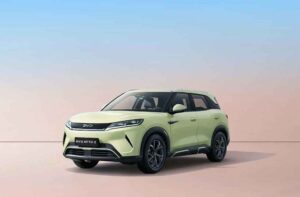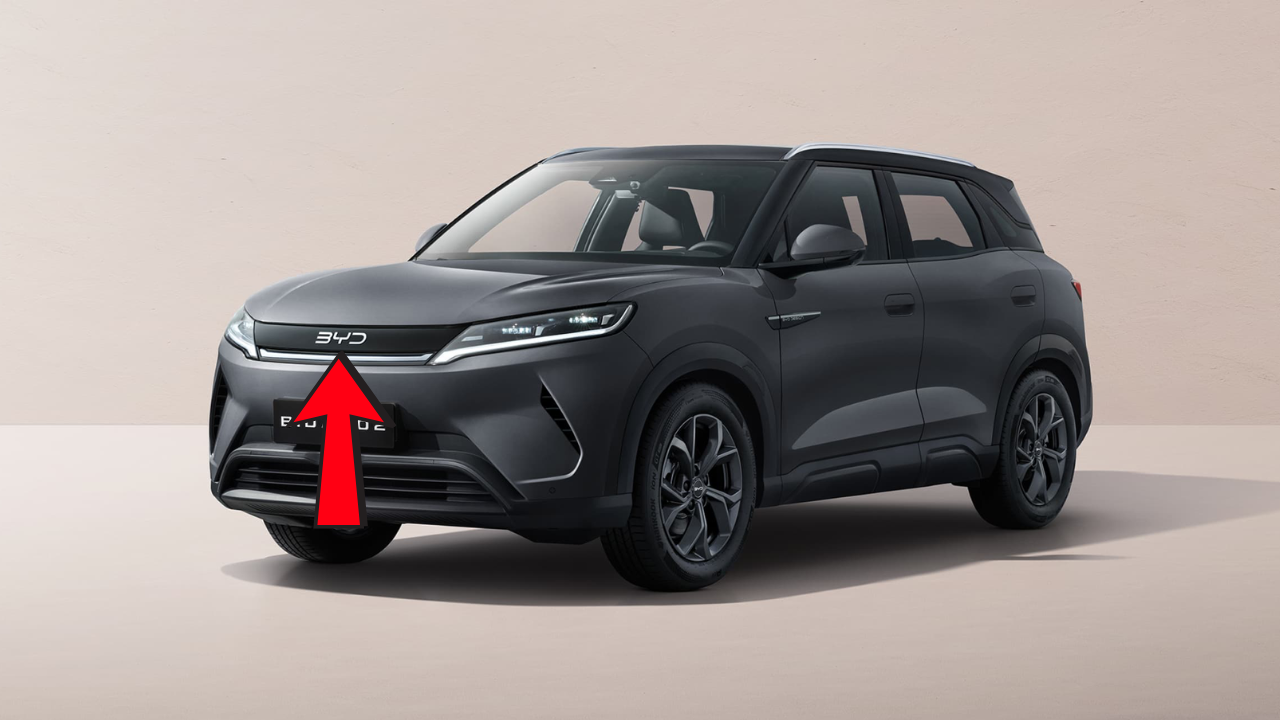China’s BYD (Build Your Dreams) is accelerating its global ambitions, with Australia emerging as a key market in its quest to become a dominant player in the electric vehicle (EV) and plug-in hybrid electric vehicle (PHEV) sectors. The recent confirmation of the BYD Atto 2, a compact electric SUV, and the Sealion 8, a seven-seat plug-in hybrid SUV, for Australian showrooms marks the beginning of a broader product offensive aimed at capturing a significant share of the country’s automotive market. With a rapidly expanding lineup and a bold goal of exports accounting for half its global sales by 2030, BYD is poised to redefine the Australian automotive landscape. This article explores the details of the Atto 2 and Sealion 8, BYD’s strategic expansion plans, and the broader implications for Australia’s EV and PHEV markets.
BYD Atto 2: Affordable Electric Mobility
The BYD Atto 2, set to arrive in Australian showrooms in the fourth quarter of 2025, is positioned as the brand’s most affordable electric SUV yet, targeting the highly competitive small SUV segment. Known as the Yuan Up in China, the Atto 2 is expected to start at around $35,000 before on-road costs, strategically priced to avoid cannibalizing sales of the larger Atto 3 ($39,990) and the smaller Dolphin hatchback ($29,990). This pricing positions the Atto 2 as a direct competitor to models like the Kia EV3 and Hyundai Kona Electric, offering Australian consumers an accessible entry point into EV ownership.
Specifications and Features
The Atto 2 is built on BYD’s e-Platform 3.0, shared with the Atto 3 and Dolphin, and features a single front-wheel-drive electric motor delivering 130kW of power and 290Nm of torque. This setup enables a 0-100km/h sprint in a respectable 7.9 seconds, making it a lively option for urban driving. The vehicle is equipped with a 51.13kWh lithium-iron phosphate (LFP) “Blade” battery, offering a claimed range of 401km under China’s lenient CLTC testing cycle, though real-world WLTP estimates suggest around 300-320km. This range, while slightly less than competitors like the Kia EV3 (436km WLTP), is competitive for its price point.
The Atto 2 incorporates BYD’s innovative “Cell-to-Body” technology, enhancing structural rigidity and maximizing cabin space. It also supports vehicle-to-load (V2L) functionality, allowing owners to power external devices via the charge port, and DC fast charging at 65kW, which can recharge from 30% to 80% in approximately 28 minutes. Inside, the Atto 2 offers a modern, tech-forward cabin with a two-tone interior, synthetic leather trim, and soft-touch materials. Essential variants feature a 10.1-inch rotating infotainment touchscreen, while Premium grades upgrade to a 12.8-inch screen and include a 360-degree surround-view camera. Standard features across the range include a panoramic sunroof, adaptive cruise control, and an 8.8-inch digital instrument cluster.
Market Positioning
The Atto 2’s competitive pricing and feature-rich offering make it a compelling choice in Australia’s small SUV market, where EVs are gaining traction. However, its success will hinge on safety ratings, as overseas versions lack a front-center airbag, potentially impacting its ability to achieve a five-star ANCAP or Euro NCAP rating. BYD’s focus on affordability and practicality positions the Atto 2 to appeal to first-time EV buyers and urban families seeking a cost-effective, eco-friendly alternative to traditional petrol-powered SUVs.
BYD Sealion 8: Premium Plug-In Hybrid Power
At the other end of the spectrum, the BYD Sealion 8, due in Australian showrooms in the first quarter of 2026, represents the brand’s foray into the large, seven-seat SUV segment. Based on the BYD Tang L sold in China, the Sealion 8 measures 5,040mm long, 1,996mm wide, and 1,970mm tall, with a 2,950mm wheelbase, placing it in direct competition with models like the Toyota Kluger, Hyundai Palisade, and Mazda CX-80 PHEV. As BYD’s first three-row SUV in Australia, the Sealion 8 combines plug-in hybrid efficiency with premium features and performance.

Powertrain and Performance
The Sealion 8 offers two plug-in hybrid powertrains: the DM-i (Intelligent) and DM-p (Performance). The DM-i features a turbocharged 1.5-litre four-cylinder petrol engine producing 110kW and 220Nm, paired with a 200kW/315Nm front-mounted electric motor and a 19kWh battery. The DM-p variant adds a 141kW/360Nm rear-axle motor, creating an all-wheel-drive setup with a combined output of 400kW and 670Nm, delivering rapid acceleration for a vehicle of its size. While exact range figures for Australia are pending, the Sealion 8 is expected to offer competitive electric-only and hybrid ranges, building on BYD’s proprietary DM-i technology, which allows seamless switching between pure EV, series hybrid, and parallel hybrid modes.
Features and Design
The Sealion 8 introduces BYD’s new “Loong Face” front-end styling, a departure from the “Dragon Face” design of earlier models like the Atto 3 and Seal. Its exterior features sleek LED headlights, flush door handles, and a bold, aerodynamic silhouette. Inside, the Sealion 8 offers a luxurious cabin with heated, cooled, and massaging seats in the first and second rows of all-wheel-drive models. A full suite of advanced safety technologies, including adaptive cruise control, lane-centring assist, and lever-activated assisted lane changes, is expected, along with up to nine airbags and adaptive suspension. The vehicle also supports a tow bar capable of pulling up to two tonnes, enhancing its versatility for Australian families.
BYD’s Broader Expansion Strategy
The Atto 2 and Sealion 8 are just the beginning of BYD’s ambitious plans to dominate Australia’s automotive market. According to BYD Australia’s Head of Product, Sajid Hasan, the current lineup of six models—Dolphin, Atto 3, Seal, Sealion 6, Sealion 7, and Shark 6—will expand significantly in the coming years. “It’s going to grow a lot more from here, but aside from Atto 2 and Sealion 8, we’re not ready to reveal [the next models],” Hasan told Drive. This expansion aims to cover all major vehicle segments, from small hatchbacks to large SUVs and dual-cab utes, positioning BYD to compete with established brands like Toyota, Hyundai, and Kia.
Sales Ambitions
BYD’s Australian sales have surged nearly 95% year-to-date, driven by strong performances from the Sealion 6 PHEV, Sealion 7 EV, and Shark 6 plug-in hybrid ute. In 2024, BYD sold approximately 20,000 vehicles in Australia, with a goal to double that figure to over 40,000 by the end of 2025. The introduction of the Atto 2 and Sealion 8, alongside the recent launch of the Sealion 7, is expected to bolster this growth. The Sealion 7, a mid-size electric SUV, has already outsold the Tesla Model Y in April 2025, signaling BYD’s potential to challenge top EV brands.
Distribution and Market Presence
BYD’s decision to take over its Australian distribution from EVDirect, effective July 1, 2025, underscores its commitment to controlling its brand narrative and streamlining operations. This move allows BYD to align its Australian strategy with its global ambitions, ensuring consistent quality and customer experience. The company’s focus on factory-backed distribution also enhances its ability to scale rapidly, with plans to establish a robust network of dealerships and service centers across the country.
Global Context
BYD’s Australian expansion is part of a broader global strategy to increase exports to half of its total sales by 2030. In 2024, BYD sold 4.27 million vehicles worldwide, with 90% of sales in China. Success in markets like Australia, Europe, and Latin America is critical to achieving this goal, especially given barriers to entry in the U.S. market. BYD’s dominance in Singapore, where it outsold Toyota in the first four months of 2025, demonstrates its ability to capture market share in competitive, high-cost environments.
Challenges and Opportunities
While BYD’s expansion plans are ambitious, challenges remain. The Australian EV market is increasingly competitive, with new entrants like Deepal, Leapmotor, and Xpeng joining established players like Tesla and Kia. The Atto 2’s lack of a front-center airbag could hinder its safety credentials, a critical factor for Australian buyers. Similarly, the Sealion 8’s premium positioning requires it to deliver exceptional quality to compete with established rivals like the Kia Sorento PHEV.
However, BYD’s strengths—innovative battery technology, competitive pricing, and a diverse lineup—position it well for success. The company’s proprietary LFP Blade batteries offer safety, durability, and cost advantages over traditional lithium-ion batteries, while its DM-i PHEV technology provides flexibility for consumers transitioning from internal combustion engines. Additionally, BYD’s focus on feature-rich interiors and advanced safety systems aligns with Australian preferences for value and technology.
Implications for Australia’s Automotive Market
BYD’s expansion signals a shift in Australia’s automotive landscape, where EVs and PHEVs are gaining traction amid rising fuel costs and environmental awareness. The Atto 2’s affordability could accelerate EV adoption among budget-conscious buyers, while the Sealion 8’s premium features and seven-seat configuration cater to families seeking sustainable alternatives to traditional large SUVs. As BYD broadens its lineup, it could challenge the dominance of Japanese and Korean brands, forcing competitors to innovate and lower prices.
Moreover, BYD’s investment in Australia reflects the country’s growing importance as a testing ground for global automakers. With supportive government policies and increasing consumer demand for EVs, Australia offers a fertile market for BYD to showcase its technological prowess and build brand loyalty.
Looking Forward
The BYD Atto 2 and Sealion 8 are more than just new models; they are the vanguard of BYD’s ambitious plan to become a household name in Australia. By targeting diverse segments with affordable, feature-rich EVs and high-performance PHEVs, BYD is laying the foundation for significant market growth. With a goal of doubling sales by the end of 2025 and expanding its model range, the Chinese automaker is poised to reshape Australia’s automotive industry. As BYD continues to innovate and adapt to local needs, its Australian expansion could serve as a blueprint for its global dominance in the EV and PHEV markets.
